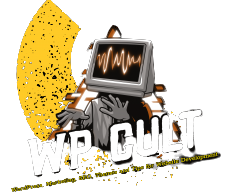SEO
2024 SEO: What to Know.

Intro to SEO
In our digitally-driven world, the virtual landscape is as volatile as the shifting sands of the Sahara, and within this ever-changing terrain lies the kingdom of SEO – an empire of strategies and tools battling for the coveted throne of search engine supremacy.
As digital explorers, we recognize the power SEO holds over the fate of websites, from the titans of e-commerce to the humble blog diaries of the solopreneur. But as 2024 approaches, the rules of engagement have evolved. AI is the new knight on the board, voice searches are crossing language barriers, and semantic intelligence means content must cater to a variety of contextual queries.
Search Engine Optimization (SEO) is a critical component of digital marketing and an essential practice for anyone who seeks to improve their website’s visibility and ranking in search engine results pages (SERPs). Integrating SEO into your daily routine can significantly enhance your online presence and drive more organic traffic to your site. In this comprehensive guide, we’ll delve into the best and worst practices of SEO, as well as explore new and outdated methods, tools that work, and those that have become obsolete.
So strap on your virtual armor and join me on this epic quest to master the art of SEO, from its historical origins to the futuristic trends that will shape the landscape of tomorrow.
Understanding SEO in 2024
Search Engine Optimization (SEO) has always been about making your website more visible to search engines. As we head into 2024, the core principles of providing valuable content and a great user experience remain paramount. However, how search engines evaluate these elements has become more sophisticated.
It involves various techniques and strategies aimed at making your site more attractive to search engines like Google, Bing, and Yahoo. A well-optimized website is more likely to receive organic traffic, which can lead to increased brand exposure, higher sales, and improved overall performance.
The Evolution of SEO
Let’s begin with a historical perspective to understand the foundations upon which current SEO practices are built. Back in the early days, SEO was simpler and often involved keyword stuffing and backlink farming. These methods are now not only outdated but can also penalize your website.
In 2024, search engines like Google use complex algorithms that consider a myriad of factors such as user engagement metrics, mobile usability, voice search optimization, content relevancy, user intent, quality of backlinks, and semantic search accuracy. AI and machine learning are major players in determining search rankings, making it essential to stay up-to-date with the latest algorithm changes.
One pivotal moment in SEO history was the introduction of updates like Google’s Panda and Penguin, which shifted the focus from quantity to quality, penalizing manipulative link-building strategies and poor content. The subsequent years brought mobile optimization and user experience into the spotlight, impacting how search engines ranked websites.
Unearthing the Roots of SEO
In the nascent days of the internet, keywords were the secret passcodes to unlock visibility. A sprinkle here, a sprinkle there, and the search engines of yore would lavish you with top rankings. Backlinks were similarly accumulated, with little regard for the realm from which they hailed.
However, the search engine algorithms, with Google’s PageRank leading the charge, began to evolve. With updates akin to a sorcerer’s incantations – Panda, Penguin, Hummingbird – the SEO world was transformed. These updates placed a premium on quality content, user engagement, and natural link-building patterns, banishing underhanded tactics to the shadowy depths of penalization.
The Pillars of a Modern SEO Kingdom.
As we sail into present-day SEO, our compass must be calibrated to the north of best practices:
Content:
At the heart of the SEO realm lies content, a vast kingdom where quality, engagement, and value rule with benevolence. Content must inform, entertain, or solve problems, lest it fall into the abyss of obscurity.
Content isn’t just king – it’s the emperor. The quality, uniqueness, depth, and relevance of content are non-negotiable elements for search success.
Technical Territory:
Herein lies the key to the kingdom – the code, the site structure, the UX – all must be orderly for Google’s royal crawlers to navigate with ease.
The technical underpinnings of your site – from site speed and mobile-friendliness to structured data and XML sitemaps – are crucial for search engine crawlers to access and understand your site.
The UX Dynasty:
User experience, the reigning dynasty, demands swift load times, a mobile-friendly court, and an engaging user journey from entry to exit. The experience users have on your site influences bounce rates and time on site, which are factors search engines use as signals of a site’s value. It’s not just about aesthetics; good UX facilitates a seamless interaction with your site, which search engines recognize and reward.
The Keyword Guild:
Wield your keywords not as blunt instruments but as a master craftsman, targeting user intent and threading them through your content tapestry with subtlety and skill.
Long gone are the days of mere keyword stuffing. A refined approach, which involves understanding user intent and the context within which keywords are used, is vital.
The Voice of the People & The Local Lair:
As voice search heralds a new dawn, and local SEO secures its stronghold, a wise webmaster will optimize for the nuances of natural speech and the significance of local prominence.
Tapping into local SEO and optimizing for voice search can provide access to targeted audience segments. Rely on hyper-local keyword strategies, leverage Google My Business to its fullest potential, and ensure NAP (Name, Address, Phone Number) consistency across the web.
Link Profile Augmentation:
Acquiring natural, high-quality links from authoritative domains remains a significant ranking factor.
Analytical Application:
Leveraging analytics to continuously optimize and tweak your strategy based on real-world data is essential for sustained SEO performance.
Interactive Content for Engagement:
Create quizzes, polls, infographics, and dynamic elements that encourage interaction and longer on-page time – favorable signals to search engines.
Video Content Proliferation:
With video predicted to account for a staggering 82% of all internet traffic by 2022, embedding relevant video content within your articles can increase dwell time and enhance the richness of user experience. As mentioned, integrate video content which can enhance user engagement and increase dwell time – a signal to search engines of quality content.
Create high-quality video content that can rank in both traditional SERPs and within video platforms like YouTube.
Revolutionizing SEO Strategies for 2024
This marks the transition between what was and what will be – a realm where artificial intelligence weaves through the fabric of SEO:
AI Augmentation:
Embrace AI tools with their predictive prowess and natural language processing capabilities, empowering you to craft content that resonates with both humans and algorithmic overlords alike.
Search engines now use artificial intelligence (AI) and machine learning algorithms to better understand user queries and deliver more personalized results. Utilize artificial intelligence (AI) tools to gather and analyze data, offering insights into user behavior, content performance, and more.
Picture this: you’re a seasoned SEO warrior, armed with your trusty keyword research tools and content creation arsenal. But the landscape is shifting. Search engines, those enigmatic gatekeepers of online traffic, are evolving into sophisticated AI beasts. Their algorithms, powered by machine learning and natural language processing, crave more than just keyword stuffing and fluffy blog posts. They hunger for deeper understanding, for content that resonates with both humans and their algorithmic overlords.
Enter the secret weapon: AI augmentation. It’s not about replacing your SEO skills; it’s about amplifying them, transforming you from a lone warrior into a cyborg of content creation, empowered by the predictive prowess of AI. Let’s dive into how you can wield this weapon in 2024 and conquer the ever-changing SEO battlefield.
Understanding the AI Overlords:
First things first, you need to speak the language of your AI allies. They communicate through data, the lifeblood of their algorithms. Tools like MarketMuse and BrightEdge can analyze your competitors, identify content gaps, and predict what topics will resonate with your target audience. Imagine having a crystal ball that shows you exactly what Google wants to see – that’s the power of AI data analysis.
Crafting Content that Speaks to Both Worlds:
But data alone won’t win you the battle. You need to translate those insights into content that dances to the rhythm of both human and algorithmic hearts. AI tools like Frase and Clearscope can help you optimize your writing for specific keywords and search intent, ensuring your content is relevant, engaging, and easily digestible by both search engines and readers. Think of them as your AI editors, whispering suggestions for improvements in real time.
The Human Touch: The Secret Sauce:
Hold on, warriors, before you get swept away by the AI hype, remember this: the human touch is still the secret sauce. AI can’t replicate the creativity, nuance, and emotional connection that humans bring to storytelling. Your unique voice, your expertise, your passion for your subject – these are the ingredients that make your content truly stand out. Use AI as your sous chef, not your replacement.
The Future of SEO: A Symbiotic Dance:
In 2024 and beyond, SEO is all about embracing this symbiotic dance between humans and AI. It’s about using AI as a powerful augmentation, not a replacement for your own skills. Think of it like strapping on a jetpack for your content creation journey. You still steer the direction, but with AI’s boost, you’ll soar past the competition and reach new heights of visibility.
So, are you ready to embrace AI augmentation and become the SEO cyborg of your dreams? Remember, the future of search belongs to those who dance with the algorithms, not fight them. So, grab your AI tools, sharpen your human skills, and prepare to conquer the ever-evolving SEO landscape!
Semantic Ascendancy:
As the search engines’ understanding deepens, so too must our content. Interlinking topics, providing context, and forging a tapestry rich with related terms.
Google’s Hummingbird update and the subsequent integration of BERT have emphasized the importance of understanding the searcher’s intent rather than just matching query keywords.
Forget keyword stuffing and robotic content. The future of SEO is paved with semantic ascendancy, a strategy where understanding meaning takes center stage. Imagine your website as a vibrant tapestry, woven with threads of interconnected topics, rich context, and a kaleidoscope of relevant terms. This, my friends, is the key to unlocking Google’s favor in 2024 and beyond.
Why the Semantic Shift?
Think of Google’s search engine as a curious explorer, venturing into the vast digital wilderness. Gone are the days of basic keyword maps. Now, Google craves meaning. It wants to understand the searcher’s intent, the context behind their query, and the web of information that truly satisfies their needs.
This is where Hummingbird and its AI companion, BERT, come into play. These updates are like Google’s sixth sense, allowing it to decipher the nuances of language and the connections between seemingly disparate topics. So, how do we, the SEO warriors, adapt to this new landscape?
Building the Semantic Tapestry:
Interweave Topics: Don’t silo your content! Let your articles flow like a meandering river, naturally connecting related themes and ideas. Mention relevant terms, link to internal pages on similar subjects, and build a web of information that guides the reader deeper into your knowledge domain.
Context is King: Remember, Google isn’t just looking for keywords; it’s seeking understanding. Provide rich context around your chosen topics. Explain concepts, offer examples, and anticipate the reader’s questions. Think of yourself as a helpful guide, not just a content dispenser.
Embrace the Thesaurus: Keywords are still important, but they’re not the only game in town. Explore synonyms, related terms, and variations on your chosen theme. This expands your reach, ensuring your content appears in searches beyond the single, exact keyword.
Data, the Semantic Fuel: Tools like Google Search Console and Ahrefs can be your semantic allies. Analyze search queries, identify related topics, and see how your content fits into the broader informational landscape. Use this data to refine your content strategy and ensure you’re weaving threads that resonate with your audience.
Searcher Intent Script:
Beyond keywords lay the intentions of the seeker. Refine your content as a scribe, interpreting the multitude of ways one may inquire about the same concept.
Forget keyword magic tricks – the real SEO sorcery lies in understanding searcher intent. It’s like deciphering a secret code, unlocking the hidden desires and motivations behind every search query. In 2024, mastering this script is the key to crafting content that resonates deeply with your audience and sends Google’s algorithms swooning.
Beyond Keywords: The Symphony of Intent:
Think of keywords as individual notes on a musical scale. Important, yes, but they alone don’t make a song. The magic lies in understanding how those notes combine, the rhythm they create, and the emotions they evoke. Similarly, keywords are just the tip of the iceberg. Searcher intent is the vast ocean beneath, teeming with unspoken desires and motivations.
The Many Faces of a Query:
Let’s take a simple search like “best running shoes.” Is the searcher a seasoned marathoner seeking high-performance kicks? A newbie jogger looking for comfortable support? Or someone with foot problems needing specialized footwear? Each query, though seemingly identical, carries a unique intent, a specific story waiting to be heard.
The Scribe’s Art: Interpreting the Code:
This is where you, the SEO scribe, come in. Your job is to interpret the code of intent, to go beyond the surface of keywords, and to delve into the searcher’s mind. Tools like Google Search Console and SEMrush can be your decoder rings, revealing related searches, user demographics, and the types of content that resonate with similar queries.
Writing for the Symphony, Not Just the Notes:
Armed with this understanding, you can craft content that truly hits the right notes. For the marathoner, you write detailed gear reviews and training tips. For the newbie, you offer beginner-friendly guides and supportive advice. And for the foot-conscious searcher, you provide expert recommendations and medical insights. Each piece, tailored to the specific intent, becomes a harmonious part of the larger symphony of your website.
The User-Centric Approach:
Metrics like Core Web Vitals are now part of Google’s algorithm, signaling the importance of the user experience for SEO. Go beyond keywords. Understand and answer the intent behind the search query.
Forget chasing algorithms and keyword ghosts. The future of SEO is all about putting the user back in the driver’s seat. It’s time to ditch the robot dance and embrace a user-centric approach, where your website becomes a haven of helpfulness, a beacon of information, and a destination your audience can’t wait to return to.
Metrics that Matter: The User’s Voice Rises
Think of Google’s algorithms as a giant satisfaction survey. Gone are the days when just stuffing keywords could win you the game. Now, metrics like Core Web Vitals – measuring page speed, visual stability, and interactivity – are the new rulers of the SEO kingdom. They tell Google one thing: your website should be a joy to use, not a frustrating labyrinth.
Beyond Keywords: Decoding the User’s Song
Keywords are like musical notes, but they don’t make a song on their own. You need to understand the melody, the rhythm, and the intent behind the search query. Is the user seeking information? Comparison? Inspiration? Your content needs to dance to the tune of their needs, not just match a keyword string.
Crafting Content that Makes Users Sing:
*Answer the “Why”: Don’t just list facts; explain the “why.” Why is this information relevant? How does it solve the user’s problem? Make your content a conversation, not a lecture.
*Embrace Storytelling: Weave narratives, anecdotes, and relatable examples to make your content engaging and memorable. People connect with stories, not dry data dumps.
*Prioritize Readability: Write in a clear, concise, and scannable way. Nobody enjoys wrestling with complex sentences or jargon. Your content should be a breeze to navigate.
*Optimize for Mobile: Remember, most searches happen on phones. Make sure your website is mobile-friendly, fast-loading, and easy to navigate on smaller screens.
So, ditch the keyword crown and embrace the user-centric crown. Craft content that resonates, optimize for delight and watch your website become the user’s favorite online hangout. In 2024, the user is king, and the SEO kingdom awaits your user-centric reign!
By injecting your personality and enthusiasm, you can transform this article into a captivating video that educates and inspires viewers to embrace the user-centric approach to SEO. Let’s build websites that users love, not just Google algorithms, and together, create a digital world that truly puts the power in the user’s hands.
Practices Worthy of a 2024 SEO Crown
Deep-Dive Content Expeditions:
Venture beneath the surface of shallow waters and produce comprehensive guides, deep-dive analysis, and content that stands as a beacon of thoroughness.
Create comprehensive content that addresses a topic from all angles, leveraging entity-based SEO, where you focus on the concepts and entities related to your keywords.
Forget wading in the shallows of SEO with thin blog posts and keyword stuffing. In 2024, the brave souls who prosper will be the ones embarking on deep-dive content expeditions, crafting comprehensive guides, in-depth analyses, and content that stands as a beacon of thoroughness. This is no mere treasure hunt; it’s an expedition to the heart of search intent, entity-based SEO, and user satisfaction.
Beyond the Surface: Diving into the Depths of Topics:
Imagine your content as a submarine, plunging into the murky depths of a search query. While others skim the surface with shallow blog posts, you, the intrepid SEO explorer, are uncovering hidden insights, exploring diverse perspectives, and leaving no stone unturned. This is where comprehensive content shines. You don’t just answer the “what”; you answer the “why,” the “how,” and even the “what if.”
Entity-Based SEO: The Map to the Treasure Trove:
Think of keywords as coordinates, but entities are the detailed map that guides you through the intricate landscape of a topic. Entity-based SEO leverages this map, focusing on the concepts, ideas, and related terms that surround your chosen keyword. This creates a richer, more contextual web of information, satisfying both search engines and users who crave depth and understanding.
The Tools of the Expedition: Your Arsenal for Success:
Keyword Research Tools: Dive deeper than basic keyword research. Explore semantic relationships, identify related entities, and understand user intent with tools like Ahrefs, SEMrush, and AnswerthePublic.
Content Planning Frameworks: Map out your deep-dive content, ensuring you cover all angles of the topic. Tools like Trello and Asana can help you structure your content and keep your expedition organized.
Data Analysis: Don’t just write; analyze! Tools like Google Search Console and Google Analytics can tell you how users are interacting with your deep-dive content, helping you refine and improve your future expeditions.
So, grab your metaphorical diving suit, pack your research tools, and set sail on your deep-dive content expedition. The SEO goldmine awaits those who dare to venture beyond the shallows and explore the depths of knowledge. In 2024, let your content be a testament to your thoroughness, your understanding of user intent, and your commitment to providing the most valuable information out there. Dive deep, explore broadly, and watch your SEO success rise to the surface!
By injecting your passion and expertise, you can transform this article into a compelling video that inspires viewers to embark on their deep-dive content expeditions. Let’s make 2024 a year of SEO exploration, where content becomes a treasure map leading users to the depths of knowledge and satisfaction. Together, we can rewrite the SEO narrative, one deep dive at a time!
Content Quality:
High-quality, valuable content continues to be the cornerstone of successful SEO. Focus on creating insightful, well-researched articles that provide real value to your readers.
Forget the fool’s gold of keyword stuffing and clickbaiting. In the SEO landscape of 2024, quality content reigns supreme. This isn’t just about churning out fluffy blog posts; it’s about crafting diamonds – insightful, well-researched articles that shine with value for your readers and dazzle the eyes of search engines.
Why Quality Matters More Than Ever:
Gone are the days of robotic algorithms blindly chasing keywords. Today’s search engines are sophisticated beasts, craving meaning, context, and genuine user satisfaction. They want content that educates, entertains, and solves problems – content that rises above the noise and becomes a trusted voice in its field.
The Hallmarks of Quality Content:
Depth, not Breadth: Dive deep into your chosen topic. Don’t just skim the surface; explore different angles, offer unique insights, and leave no stone unturned. Think of it as building a skyscraper, not a flimsy shack.
Research, not Assumptions: Back up your claims with credible sources, data, and expert opinions. Don’t just string together anecdotes; build a foundation of trust with well-researched information.
Clarity, not Confusion: Write in a clear, concise, and engaging way. Avoid jargon, complex sentences, and anything that might leave your reader scratching their head. Remember, you’re there to enlighten, not obfuscate.
Value, not Vanity: Ask yourself, “Does this content genuinely benefit my readers?” If the answer is no, rework it. Your goal is to solve problems, answer questions, and make your reader’s life better in some way.
The Tools of the Trade:
Keyword Research: Go beyond basic keyword tools. Understand user intent, identify related topics, and analyze search trends to ensure your content hits the right notes.
Content Planning Frameworks: Plan your content strategically, ensuring you cover all angles of your topic logically and engagingly.
Grammar and Style Checkers: Don’t let typos and grammatical errors tarnish your diamond. Use tools like Grammarly and Hemingway Editor to polish your content to perfection.
Speed & Stability:
The architecture of your digital empire must withstand the tests of time and traffic. Optimize, compress, cache – ensure your foundations are unshakeable.
Focus on improving your website’s speed through optimized images, minimalistic coding, content delivery networks (CDNs), and fast hosting services.
Speed & Stability: Building an SEO Fortress in 2024
Imagine your website as a digital empire, a bustling hub of information and commerce. But what happens when the drawbridge is slow, the walls crumble under traffic, and the internet moat is clogged with lag? Your visitors flee, search engines scoff, and your SEO dreams crumble like stale croissants. That’s why, in 2024, speed and stability are not just buzzwords; they’re the cornerstones of a thriving online kingdom.
The Impatient User: A Force to Be Reckoned With
Modern users are speed demons. They expect websites to load like greased lightning, content to appear instantly, and interactions to be as smooth as a freshly paved highway. Any hiccup, any delay, is met with a click of the back button and a swift retreat to a faster, more stable domain. Google, the gatekeeper of the online world, feels the same. Its algorithms favor websites that prioritize Core Web Vitals, and metrics that measure page loading speed, visual stability, and overall responsiveness.
Optimizing for Speed and Stability: The Royal Tools of Your Arsenal
Image Optimization: Conquer the bloat! Compress your images without sacrificing quality, using tools like TinyPNG or ShortPixel. Smaller images mean faster loading times and happier users.
CSS and Code Minimization: Trim the fat! Streamline your website’s code by removing unnecessary characters and whitespace. Every byte counts when it comes to speed.
Leveraging CDNs: Build a network of outposts! Content Delivery Networks (CDNs) store your website’s content on servers around the globe, delivering it to users from the closest location. Think of it as a global army of servers, ready to serve your content at lightning speed.
Fast Hosting is Key: Choose a reliable hosting provider that prioritizes speed and uptime. A slow server is like a sluggish drawbridge, keeping users locked out of your digital kingdom.
Caching for Efficiency: Don’t reinvent the wheel! Implement caching mechanisms to store frequently accessed data, reducing server load and delivering content to users faster than ever before.
Mobile-First Indexing:
Prioritize the mobile version of your content as the primary source for indexing and ranking, as mobile usage continues to surpass desktop.
Forget the days of desktop-first SEO, where your website was a sprawling mansion and mobile a cramped guest house. In 2024, the mobile experience reigns supreme. Your website’s mobile version is no longer the afterthought; it’s the throne room, the heart of your SEO kingdom, where users and search engines alike gather to judge your digital domain. Why? Because mobile usage has skyrocketed, becoming the undisputed king of internet access. So, if you want your website to flourish in this mobile-first era, prioritizing mobile-first indexing is your golden ticket to SEO success.
Mobile-First Indexing: Deciphering the Royal Decree
Imagine Google as a meticulous librarian, meticulously cataloging the vast web. In 2016, Google issued a royal decree – mobile-first indexing. This means the search engine now primarily uses the mobile version of your website to understand your content, rank your pages, and determine your worthiness in the digital kingdom. Ignoring this decree is like building a magnificent castle with no drawbridge – users and search engines simply won’t reach your content.
Why Mobile-First Matters More Than Ever:
Mobile Domination: The stats speak for themselves. Over 60% of all internet traffic now comes from mobile devices. Ignoring this shift is like ignoring the majority of your potential audience.
User Experience is King: Google prioritizes websites that provide a seamless, user-friendly experience on mobile. A clunky, slow-loading mobile version is like a crumbling throne room, repelling both users and search engine bots.
Core Web Vitals: These metrics, measuring page speed, visual stability, and interactivity, are crucial for mobile SEO. A website that stutters and lags on mobile is doomed to languish in the SEO dungeons.
Building Your Mobile-First SEO Fortress:
Responsive Design is Mandatory: Invest in a responsive website design that seamlessly adapts to all screen sizes. Think of it as a magical cloak that transforms your website from a grand castle to a cozy mobile tent, equally welcoming on any device.
Speed is of the Essence: Optimize your website for mobile speed. Compress images, minify code, and leverage caching mechanisms. A fast-loading mobile website is like a well-oiled drawbridge, granting users instant access to your digital kingdom.
Content Tailored for Mobile: Don’t just shrink desktop content for mobile. Adapt your content format, prioritize readability, and ensure key information is easily accessible on smaller screens. Think of it as crafting bite-sized delicacies fit for a mobile feast.
Test, Analyze, and Adapt: Use Google Search Console and other tools to monitor your website’s mobile performance. Identify areas for improvement, test different layouts, and constantly refine your mobile experience. Remember, a stagnant website is like a decaying castle, soon to be overtaken by nimbler competitors.
Authority and Trust:
Establish your site and yourself as a reliable sage in your industry, citing research, showcasing expertise, and building a narrative that not only informs but instills confidence. Continue to build your brand and website’s authority with high-quality, fact-checked content attributed to reputable authors. Establish your Expertise, Authoritativeness, and Trustworthiness. Search engines favor content from credible sources.
In the SEO landscape of 2024, authority and trust are the shimmering diamonds adorning the crowns of the most successful websites. Think of it like a grand game of digital chess, where every piece of content, every expert opinion, and every user interaction is a strategic move toward establishing your website as the undisputed king of its niche.
Why Authority & Trust Matter More Than Ever:
Gone are the days when search engines were easily fooled by keyword stuffing and robotic content. Today’s algorithms are sophisticated queens, demanding credibility, expertise, and a deep understanding of your audience’s needs. They crave content that not only informs but also inspires trust, which positions your website as the go-to source for reliable information and insightful advice.
Building Your Authority Tower: The Bricks of Success:
Expertise is Your Mortar: Back up your claims with credible sources, data-driven insights, and expert opinions. Cite reputable studies, showcase relevant certifications, and let your passion for your field shine through. Remember, knowledge is power, and wielding it wisely builds trust.
Quality, Not Quantity: Ditch the content churn and focus on in-depth, well-researched articles that address your audience’s specific needs. Offer unique perspectives, insightful analyses, and actionable takeaways. Think of your content as a treasure chest, brimming with valuable knowledge.
Fact-Checking is Your Shield: Misinformation is the enemy of trust. Double-check your facts, cite reliable sources, and avoid making unsubstantiated claims. Remember, accuracy is your armor, protecting you from the arrows of doubt.
Author Reputation is Your Banner: Build your brand and your credibility as an expert in your field. Publish guest articles on reputable websites, engage in online communities, and participate in industry events. Become a familiar face, a trusted voice, and watch your authority soar.
So, polish your expertise, wield the sword of fact-checking, and raise the banner of trust. In 2024, authority and trust are not just SEO jewels; they are the crown that marks your website as a true leader in its digital domain. Together, let’s build a web where content is credible, voices are trusted, and every website shines with the brilliance of genuine expertise.
Keyword Research:
Use advanced keyword research tools to find terms and phrases your target audience is searching for. Incorporate these keywords naturally into your content, titles, meta descriptions, and URLs.
keyword research has evolved from a treasure hunt to an intricate expedition, demanding not just shovels and maps, but a compass of user intent and a magnifying glass for search context. It’s about uncovering hidden gems – relevant, high-value keywords that resonate with your audience and guide them to your content like a beacon in the digital sea.
Beyond the Buzzwords: Understanding User Intent
Keywords are no longer just strings of words; they’re whispers of human needs, desires, and questions. The days of robotic keyword stuffing are over. Today’s savvy SEO adventurers understand that understanding user intent is the key to unlocking the hidden potential of keywords. Is your audience searching for information, comparison, or a specific solution? Answering this question is the first step on your keyword research treasure hunt.
Tools of the Trade: Your Arsenal for Discovery
Just like any explorer, you need the right tools. Advanced keyword research platforms like Ahrefs, SEMrush, and AnswerthePublic are your compass, guiding you towards relevant terms and revealing the hidden landscape of search queries. They’ll show you not just what people are searching for, but also how they’re searching, uncovering long-tail keywords and related topics that offer rich opportunities for content creation.
The Art of Keyword Integration: Weaving the Magic Carpet
Once you’ve unearthed your keyword gems, it’s time to weave them into your content like a magic carpet, transporting users to your website. Don’t just stuff them in; incorporate them naturally into your titles, meta descriptions, headings, and throughout your text. But remember, keyword integration is a delicate dance. Overstuffing will get you penalized by search engines, leaving you stranded in the SEO desert.
Context is King: The Hidden Gems of Search
Keywords are just the starting point. The real treasure lies in understanding the context in which they’re searched. Consider the searcher’s journey. What led them to this keyword? What information are they seeking? What questions do they have? By understanding the context, you can craft content that truly resonates, offering the answers they crave and exceeding their expectations.
User Experience (UX):
A website with an excellent UX is crucial for keeping visitors engaged. Ensure fast loading speeds, mobile-friendliness, intuitive navigation, and a clean design.
In the SEO arena of 2024, the true champion wields a different weapon – user experience (UX). Think of it as your Excalibur, the shimmering sword that cuts through frustration, banishes confusion, and leads your audience on a delightful journey through your website. Why? Because in this age of endless information overload, a website that prioritizes UX isn’t just a nice-to-have; it’s a survival necessity.
The Rise of the Impatient User:
Imagine a user, a digital knight on a quest for information. They click your website, expecting a smooth journey. But what do they find? Lagging pages, confusing menus, and design choices that make them want to scream, “Off with their heads!” In 2024, users are kings and queens, demanding fast loading times, intuitive navigation, and a clean, user-friendly design. Fail to meet these expectations, and you’ll be sent packing to the SEO dungeon.
The UX Armory: Tools for a Winning User Journey:
Speed is King: Equip your website with a lightning-fast server and optimize your pages for speed. Remember, waiting is like torture for modern users – keep them engaged, not imprisoned by slow loading times.
Mobile-First Mindset: Don’t treat mobile as an afterthought; make it your kingdom’s main hall. Responsive design is no longer a suggestion, it’s a requirement. Ensure your website adapts seamlessly to all screen sizes, offering a smooth experience from desktop to smartphone.
Navigation: The Royal Map: Make your website easy to navigate, with clear menus, logical pathways, and intuitive search functionalities. Think of it as a well-marked map, guiding users to the information they seek without getting lost in the digital wilderness.
Design with Clarity: Banish visual clutter and embrace clean, uncluttered layouts. Use high-quality visuals strategically, and prioritize readability above all else. Remember, a beautiful website is useless if it’s confusing to navigate.
Content is Your Currency: Offer valuable, relevant content that answers user queries and solves their problems. Craft engaging articles, create informative videos, and present information in a way that is easily digestible and enjoyable to consume. Think of it as your treasure chest, overflowing with riches for your audience.
Link-Building Strategies:
Acquire high-quality backlinks from reputable sites by creating shareable content, guest blogging, and mutually beneficial partnerships.
link building has evolved into an intricate dance of quality, relevance, and genuine relationships. It’s no longer about brute force and backlinks from shady corners of the web; it’s about building a digital embassy, forging connections with reputable websites and influencers who share your values and audience.
Why Links Matter More Than Ever:
Think of links as bridges, connecting your website to other websites in the vast digital landscape. Search engines, the gatekeepers of this realm, value these connections. A website with a strong network of high-quality backlinks, built through genuine relationships and relevant content, is seen as a trustworthy authority, worthy of a prominent position in the search results.
Quality over Quantity: The Golden Rule of Links:
Forget the days of mass-acquiring low-quality links. Today, search engines are sophisticated enough to sniff out black-hat tactics. Focus on building fewer, but higher-quality links from websites relevant to your niche and trusted by your audience. One link from a reputable industry blog is worth more than a thousand spammy directory entries.
The “Hack” of Shareable Content:
Create content so good, so informative, so engaging, that people can’t help but share it. Infographics that spark conversation, videos that go viral, and articles that provide genuine value are magnets for backlinks. Focus on quality, not quantity, and watch your website become a hub for valuable information, naturally attracting links like bees to nectar.
The Power of Guest Blogging:
Become a trusted voice in your industry by guest blogging for relevant websites. Offer your expertise, share your insights, and build relationships with other bloggers and influencers. Remember, guest blogging is a two-way street; offer value, build trust, and watch the backlinks flow naturally.
Mutually Beneficial Partnerships:
Look for opportunities to collaborate with other websites in your niche. Co-create content, host joint webinars, or cross-promote each other’s products or services. These partnerships can lead to valuable backlinks, increased brand awareness, and a win-win situation for everyone involved.
Semantic Search:
Optimize for semantic search by understanding user intent and providing comprehensive content that satisfies their queries.
SEO is all about understanding the whispers in your audience’s mind, their unspoken desires, and the hidden meanings behind their search queries. This is the age of semantic search, where search engines are no longer just keyword matchmakers, but meaning-makers, deciphering the intent behind every search and surfacing the content that truly satisfies it.
Beyond the Keywords: Decoding the User’s Story
Imagine a user searching for “best hiking boots.” Are they a seasoned mountaineer seeking technical specs? Or a casual hiker looking for comfortable weekend trails? Semantic search understands these nuances. It goes beyond the literal meaning of keywords, analyzing context, user behavior, and search history to paint a picture of the user’s intent. Your job, as an SEO warrior, is to craft content that speaks directly to that story, addressing their specific needs and exceeding their expectations.
Optimizing for the Unseen: The Tools of the Trade
Keyword Research with a Twist: Don’t just chase keywords; understand the entities and concepts related to your topic. Tools like Google Search Console, Ahrefs, and SEMrush can help you identify the broader semantic landscape surrounding your keywords, revealing user intent and related search terms.
Content that Reads Like a Conversation: Ditch the keyword stuffing and write naturally, using synonyms, related terms, and a conversational tone. Think of your content as a dialogue with your audience, addressing their unspoken questions and providing comprehensive answers.
Structure for Clarity: Organize your content logically, using headings, subheadings, and bullet points to break down complex topics into easily digestible chunks. Remember, semantic search loves clear, well-structured content that makes it easy for both users and search engines to understand.
Entities: The Unsung Heroes: Think of entities as the building blocks of meaning. Use relevant entities like brands, locations, or products within your content, providing context and depth to your topic. Search engines love entities, and associating your content with relevant ones can boost your visibility.
Featured Snippets:
Aim to answer questions directly and clearly to increase the chances of your content being showcased in the coveted ‘Position 0’ in search results. Optimize your content to appear in featured snippets by directly answering questions and structuring your content in easy-to-read formats.
In 2024, the ultimate SEO trophy isn’t just a top spot; it’s the coveted Position 0: the featured snippet, that golden box of knowledge that sits above all the rest. Think of it as a spotlight on your website, a chance to answer your audience’s questions directly and instantly, becoming the ultimate source of truth in the digital jungle.
Why Featured Snippets Matter More Than Ever:
In today’s fast-paced world, users crave immediate answers. They don’t want to sift through pages of text; they want their questions answered in a concise, clear, and readily digestible format. Featured snippets fulfill this desire, providing them with the information they need at a glance, without even having to click on your website.
Claiming the Featured Snippet Throne: The Royal Tools of Optimization
Know Thy Audience, Know Thy Queries: Understanding what your audience is searching for is key. Use keyword research tools and analyze search trends to identify the questions they’re asking and the information they’re seeking. Remember, relevance is your crown jewel.
Direct Answers, Not Evasive Maneuvers: Ditch the rambling prose and focus on providing concise, clear answers to specific questions. Think of it like crafting an elevator pitch for your knowledge. The more direct and informative, the better your chances of snagging the snippet.
Structure is Your Shield: Organize your content in a way that makes it easy for search engines to understand and users to find. Use bullet points, numbered lists, tables, and headings to break down complex information into bite-sized chunks. Remember, clarity is your armor, protecting you from the obscurity of poorly structured content.
Formatting for the Spotlight: Optimize your content for the snippet format. Use bold text, italics, and clear formatting to ensure your answer stands out and is easily readable within the limited space. Remember, presentation is key, and a visually appealing snippet is more likely to catch the eye.
Data is Your Currency: Back up your answers with credible sources and relevant data. The more authoritative your content, the more likely search engines are to deem it worthy of the featured snippet crown.
Voice Search Optimization:
With the growing popularity of voice assistants, optimize your content for voice search by incorporating conversational language and answering common questions.
In 2024, SEO has a new hero – the voice search whisperer, the master of conversational language and the champion of user intent. Why? Because the digital landscape is changing its tune, with voice assistants like Siri and Alexa becoming the go-to gateways for information. Think of it as a grand opera house, where users hum their questions instead of typing them, and your website needs to be ready to sing a captivating aria that answers their needs perfectly.
The Rise of the Voice-First Audience:
Imagine a user, their phone in hand, whispering a question into the void. They’re not searching for perfectly structured sentences; they’re speaking in natural, conversational language. This is the voice search revolution, and it’s changing the way users interact with information. To succeed in this new era, your website needs to understand the rhythm of human speech, anticipate their questions, and respond in a way that feels natural and helpful.
Optimizing for the Opera Stage: The Tools of the Trade
Conversational Language is King: Ditch the robotic jargon and embrace the power of natural, everyday language. Write as you would speak, using contractions, slang, and even humor where appropriate. Remember, your content should feel like a conversation, not a lecture.
Answer the Unsung Questions: Use keyword research tools to identify the common questions people ask using voice search. Think beyond the obvious keywords and delve into the long-tail queries, the whispered desires, and the unspoken curiosities of your audience.
Structure for Clarity, Not Rigidity: Organize your content in a way that makes it easy for voice assistants to understand. Use short paragraphs, bullet points, and numbered lists to break down information into bite-sized chunks. Remember, clarity is your spotlight, guiding users to the information they need in a way that’s easy for voice assistants to interpret.
Local Optimization is Your Encore: Don’t forget the power of local SEO. Optimize your website for location-based searches, ensuring your business information is accurate and easily accessible for voice assistants looking for local solutions. Remember, proximity is a powerful voice search factor, and claiming the local stage can bring your business center stage.
Accessibility for All:
Ensure your site is accessible to all users, including those with disabilities, by adhering to web accessibility standards like the WCAG.
In 2024, the true ascent lies in building a website accessible to everyone, a digital haven where every user, regardless of ability, can navigate with ease, find the information they seek, and feel truly welcome. This is the year of inclusive SEO, where optimization extends beyond keywords and algorithms, embracing the needs of diverse users and weaving a web of accessibility that welcomes all.
Why Accessibility Matters More Than Ever:
Imagine a user, eyes closed, navigating your website with a screen reader. Or someone with motor impairments struggling to click your tiny buttons. These are not just hypothetical scenarios; they represent the millions of users who face daily barriers on the web. In 2024, accessibility is not a luxury; it’s a necessity. It’s about building a website that embraces diversity, empowers everyone, and reflects the true spirit of inclusivity.
Building the Accessible SEO Bridge: The Tools of the Trade
WCAG: Your Accessibility Compass: The Web Content Accessibility Guidelines (WCAG) are your roadmap, outlining best practices for making websites accessible to everyone. From alt text for images to keyboard navigation options, WCAG provides the framework for building an inclusive digital experience.
User Testing is Your Mirror: Don’t just assume; test your website with real users with diverse abilities. Use screen readers, assistive technologies, and different devices to identify potential barriers and refine your website’s accessibility. Remember, user feedback is your most valuable guide.
Content Speaks Louder Than Words: Craft content that is clear, concise, and easy to understand. Avoid technical jargon, provide alternative text descriptions for images, and structure your content logically for screen reader navigation. Remember, every word has the power to build bridges or create barriers.
Design for All, Not Just Some: Don’t let aesthetics trump accessibility. Choose high-contrast colors, implement clear font sizes, and ensure your website layout is intuitive and navigable with both keyboard and mouse. Remember, design is not just about beauty; it’s about creating a user-friendly experience for everyone.
The 2024 SEO Arsenal – Tools of the Conqueror
CognitiveSEO & DeepCrawl:
Analytics tools are your scouts, surveying the hinterlands for opportunities and threats. Use them to gain insights and fortify your position.
Tools:
With these at your side, understand the ever-changing whims of the populace, and create content that appeals to the masses but satisfies the nobility (search engines).
SEMrush:
A versatile tool for SEO, content marketing, competitor research, PPC, and social media marketing.
Google Analytics:
The quintessential tool for understanding website performance and user activity. Go beyond basic traffic metrics and dive deep into user behavior analytics to make informed SEO decisions.
SerpStat:
Serpstat is a search engine optimization (SEO) and marketing tool that helps businesses improve their online visibility. It offers a variety of features, including keyword research, competitor analysis, rank tracking, and backlink monitoring. Serpstat can be used to identify profitable keywords, track website ranking progress, and analyze competitor SEO strategies. It also provides tools for creating and managing SEO campaigns.
UberSuggest
Ubersuggest is a free keyword research tool from Neil Patel that helps businesses with their SEO. It can help businesses find keywords that people are searching for and create content that people want to read. Ubersuggest can also help businesses track their rankings and backlinks. There is a free version with limited features, and a paid version with more features.
Serp Robot
SerpRobot is a highly acclaimed SERP (Search Engine Results Page) checker tool, widely praised by web developers, SEO agencies, freelancers, and businesses of various sizes. It is celebrated for its accuracy, ease of use, and affordability. The platform offers both a free version with robust functionalities and a paid version that allows for a significant number of daily SERP checks. Users appreciate SerpRobot for its efficiency in saving time and its effectiveness in providing valuable search engine ranking insights. The tool is designed to be fast, reliable, and user-friendly, making it a top choice for anyone needing to track website rankings on search engines. SerpRobot also offers a 14-day full-service trial without requiring credit card details, allowing users to experience its capabilities firsthand.
Peak Serp
PeakSERP is a rank tracking tool designed for SEOs and bloggers, offering a streamlined way to monitor a website’s organic rankings. It simplifies the process by distilling site performance into key performance indicators (KPIs), allowing users to quickly understand changes in their site’s ranking. The tool provides fast and accurate tracking, personalized to the user’s needs, including options for tracking data refresh schedules, and supports tracking for various audiences, languages, and devices. PeakSERP focuses on rankings rather than traffic, adding context like search update dates and keyword volume to aid in rapid analysis and action. The platform is user-friendly, with features like automatic keyword suggestions based on the user’s domain and the ability to import data from SerpRobot. It’s noted for its affordability, offering all features at a base rate of $5 per month for tracking 75 keywords daily, along with a 7-day free trial, unlimited projects, and various other functionalities. PeakSERP is platform-agnostic, working with various CMSs and custom sites, and operates as a standalone web app, ensuring no interference with the user’s website.
Go Index Me
A service that automatically scans all your URLs and politely asks Google to index them.
Moz Pro:
An SEO software with tools for keyword research, link building, site audits, and page optimization.
Ahrefs:
An all-encompassing SEO toolset for competitor analysis, keyword research, and more.
Screaming Frog SEO Spider:
A website crawler that helps you identify SEO issues.
Yoast SEO:
A WordPress plugin that helps you with on-page SEO.
AI-Powered SEO Tools:
Embrace AI-driven tools that offer predictive insights, sophisticated keyword processing capabilities, and content optimization suggestions.
Tools That Don’t (Or Are Less Effective):
Automatic Backlink Generators:
These are often spammy and can harm your website’s reputation.
Keyword Density Tools:
Keyword density is an outdated concept. Modern SEO emphasizes the quality of content and context.
Any SEO Software That Promises Instant Rankings:
Real SEO takes time and effort. Instant solutions often involve tactics that are against webmaster guidelines.
Final Thoughts: Be wary of any tools that promise quick fixes, automated link-building schemes, or outdated keyword generators. SEO requires a thoughtful and strategic approach; therefore, avoid tools that employ techniques that search engines now penalize.
Common Pitfalls to Avoid
Over-optimization:
Stuffing your content with too many keywords can flag your site as spammy to search engines.
Neglecting Mobile Users:
Not having a mobile-friendly site is a grave mistake as mobile traffic continues to grow. With the rise of mobile searches, ignoring mobile SEO is a detrimental mistake. Ensure your site is responsive and mobile-friendly.
Ignoring Local SEO:
For local businesses, this can be detrimental, as many users look for local information daily.
Buying Links:
This black-hat technique can result in severe penalties from search engines.
Keyword Stuffing:
Excessively using keywords in your content can lead to penalties from search engines. Avoid this outdated method that once dominated older SEO strategies.
Low-Quality Backlinks:
Linking to or from low-quality, irrelevant websites can harm your SEO. It’s better to have fewer, high-quality links than many poor ones.
Duplicate Content:
Never copy-paste content from other sites or use the same content across multiple pages on your site. Search engines favor unique and original content.
A Cautionary Note on Black-Hat SEO Tactics:
Avoid black-hat SEO tactics at all costs. These are techniques that aim to cheat or manipulate search engine rankings but can lead to being de-indexed or heavily penalized by search engines.
SEO No-Nos: Outdated and Harmful Practices
Equally as important as understanding what to do is recognizing what not to do. This chapter addresses the SEO strategies and tactics that are outdated, or worse, damaging to your SEO efforts:
Outmoded Link Directories and Article Submission Sites:
High-volume, low-quality link building is no longer effective and can incur severe penalties from search engines.
Neglected Social Signals:
While not a direct ranking factor, social signals can indicate content popularity and relevance, so engaging on social platforms should not be ignored.
Overlooking User-Generated Content (UGC):
Fostering a community where UGC can thrive not only enriches your site’s content but also signals to search engines that your site is an authoritative resource.
Failure to Optimize for Featured Snippets:
Missing out on the opportunity to be featured in the coveted “position zero” can mean you’re allowing competition to outshine you in SERPs.
Ignoring Security and Privacy:
With increasing concerns over data breaches, ensuring your site uses HTTPS encryption is essential for both SEO and user trust.
Managing the SEO Dominion – Your Daily Decrees
Morning Sermons:
Begin each day reviewing analytics and SERP positions; align your content strategy to respond dynamically to the changing winds.
Midday Missives:
Invest time crafting responses to engagement and forging alliances through backlinks and guest contributions as the sun climbs high.
Evening Evaluations:
End your day by studying the trends and patterns of your subjects (users), and continuously refining your strategies to meet their needs.
Integrating SEO into Your Day-to-Day
Start with a Strategy:
Define clear goals for your SEO efforts – whether it’s increasing organic traffic, improving conversion rates, or boosting your brand’s visibility.
Keyword Research:
Use tools like Google Keyword Planner, Ahrefs, or SEMrush to find keywords that are relevant to your business but also have reasonable competition levels.
Content Creation:
Produce high-quality, relevant content geared towards your audience’s interests and pain points. Remember to optimize your content for both humans and search engines – balance is key.
Content Calendar Management:
Develop a robust content strategy and stick to a calendar. Frequent high-quality posts tailored to your audience’s interests and search behaviors are ideal.
On-Page and Off-page Optimization:
This includes optimizing title tags, meta descriptions, header tags, and images, as well as ensuring your URLs are search-friendly. Dedicate time each day for on-page optimization tweaks and off-page efforts like outreach and guest posting.
Technical SEO:
Regularly audit your site using tools like Google Search Console, Screaming Frog, or other automated tools to find and fix issues such as broken links, slow page loading times, or duplicate content to rectify quickly.
Mobile Optimization:
With more searches being done on mobile devices, having a responsive website that loads quickly on smartphones and tablets is non-negotiable.
Voice Search:
Optimize for conversational keywords and phrases as voice-activated searches are on the rise.
Local SEO:
Update your Google My Business listing and ensure your NAP (Name, Address, Phone number) is consistent across all platforms.
Link Building:
Cultivate high-quality backlinks by creating shareable content and engaging with your community, rather than resorting to shady tactics.
Backlink Profile Monitoring:
Regularly review your backlink profile to weed out any harmful links and work on cultivating positive relationships with sites for gainful linking opportunities.
Analytics:
Monitor your progress using tools like Google Analytics and adjust your strategies based on the data collected.
Conversion Rate Optimization (CRO):
Assess how users interact with your site and optimize for conversions as part of your daily SEO practice.
Monitor Your Site Regularly:
Use SEO tools daily to monitor your website’s performance and identify areas for improvement.
Stay Updated:
with SEO news and trends to adjust your strategies accordingly.
Allocate Time:
each day to research keywords, analyze competitors, and optimize your content.
Educate Your Team:
Ensure that everyone involved in content creation understands the principles of SEO.
Staying Current
SEO is an ever-changing field – subscribe to industry blogs, follow thought leaders on social media, and participate in webinars or conferences to stay informed about the latest trends and updates.
Embrace Flexibility and Adaptability:
The only constant in SEO is change. Adopt a flexible approach to your SEO strategy that allows for rapid pivots in response to algorithm updates and market trends.
Pursue Continuous Education:
Participate in SEO communities, attend webinars, and workshops, and invest in ongoing learning to stay ahead of the curve.
Innovate Constantly:
Never rest on your laurels. Experiment with new types of content, emerging platforms, and alternative approaches to SEO.
Develop an Omnichannel Approach:
Integrate SEO with other marketing activities for a cohesive and unified digital presence.
Conclusion
As our expedition reaches its terminus, recognize that SEO isn’t simply a tactic but an enduring legacy you build upon the digital landscape. Remember, the SEO realm rewards the brave and the bold, those willing to adapt and innovate. Master these principles and you will command the respect of the digital realm in a time when the line between the virtual and the real becomes ever more blurred.
Integrating SEO into your day-to-day requires a strategy that aligns with your business objectives and the latest in search engine technology. By following best practices and avoiding detrimental tactics, you can build a solid SEO foundation that drives search engine traffic to your site in 2024.
By following the insights, practices, and methods outlined in this guide, you are now armed to fortify your website’s SEO prowess in 2024. Remember, SEO is a long-term game; consistency and quality will reap rewards over time, as will a dynamic strategy that aligns with the evolving digital ecosystem.
Our journey through SEO is extensive, but crucially, this guide offers actionable strategies that can be methodically implemented into your daily, monthly, and yearly workflows to ensure consistent search engine traffic and online growth. The vastness of the topic means there’s always more to explore, but following this guide will provide a solid foundation for successful SEO.
In conclusion, SEO remains a crucial aspect of a successful online presence in 2024. Adhering to best practices, avoiding outdated methods, leveraging emerging trends and tools, and integrating SEO into your daily routine will position your website for better visibility and increased traffic in the ever-evolving digital landscape.
SEO
45X Ways to Skyrocket Your Search Traffic
This Traffic guide offers 45 strategies to boost search traffic, focusing on technical SEO, content, and link building. It advises on key aspects like using Google’s tools for tracking website performance and identifying errors, optimizing for mobile, fixing broken links, incorporating keywords, and creating engaging content. It also encourages strategic link building through guest blogging, social media promotion, and producing infographics. By following these tactics, you can expect improved website visibility and higher organic traffic.

Traffic Guide
Looking to boost your search traffic this year? You’re in the right place. This guide uncovers 45 dynamic strategies to elevate your SEO game.
SEO isn’t rocket science; it’s about mastering three core areas:
- Technical SEO
- Content
- Link Building
Let’s dive into how to excel in each area this year.
Download My Exclusive SEO Tool Now
And discover four innovative ways to increase search traffic without relying on backlinks.
How To Use My SEO Checklist
Think of SEO as constructing a robust building. Start with a solid foundation (technical SEO) and then layer on content and link-building strategies. Follow this checklist from top to bottom for the best results.
SEO Basics Checklist
1. Set Up Google Search Console
- Essential for tracking website performance and insights into Google’s view of your site.
- Identify errors, track SERP performance, view traffic-driving keywords, and more.
2. Install Bing Webmaster Tools
- Optimize for Bing’s growing user base and its unique search engine market share.
- Monitor Bing rankings and optimize accordingly.
3. Set Up Google Analytics
- Understand your audience deeply with this powerful tool.
- Analyze leads, conversions, traffic sources, and more.
4. Install An SEO Plugin
- For WordPress users, Rank Math or Yoast SEO is indispensable.
- Rank Math leads with features and user-friendliness.
5. Create & Submit A Sitemap
- Direct Google to all your website pages for optimal indexing.
- Use Google Search Console for sitemap submission.
6. Generate A Robots.txt File
- Control what search engines index.
- Use Rank Math for easy robots.txt generation.

Technical SEO Checklist
7. EAT Signals
- It is crucial for trust and authority, especially for YMYL content.
- Showcase expertise, authority, and trustworthiness throughout your site.
8. Mobile-Friendly Site
- Essential since Google’s mobile-first indexing.
- Use Google’s mobile-friendly test tool for evaluation.
9. Site Speed
- A critical ranking factor after Google’s page experience update.
- Utilize Google’s Page Experience report for insights.
10. Crawling Errors
- Fix them with tools like Semrush and Ahrefs for better indexing.
11. Indexing Errors
- Identify and resolve them via Google Search Console.
- Ensure key website parts are indexed for optimal SERP performance.
12. Use HTTPS
- Secure your site for better ranking and user data protection.
- Check SSL certificate quality with the SSL Labs test.
13. Eliminate Duplicate Content
- Use canonical tags and no index tags to manage duplicate content.
14. Canonical Tags
- Prevent duplicate content issues, especially for home pages.
15. Broken Links
- Fix them for better user experience and SEO health.
16. Structured Data
- Implement schema markup for rich SERP results.
- Utilize Rank Math for easy schema implementation.
17. Fix Orphaned Pages
- Identify and link them for better indexing and navigation.

Keyword Research Checklist
18. Build A Keyword Strategy
- Use intelligent tools and research to formulate a winning strategy.
19. Google Suggest For Long-Tail Keywords
- Utilize Soovle for efficient long-tail keyword discovery.
20. Google Keyword Planner
- Leverage Google’s tool for in-depth keyword insights.
21. Use AnswerThePublic
- Uncover question-based keywords relevant to your audience.
22. Forums & Communities
- Dive into Reddit and Quora for untapped keyword ideas.
Content Checklist
23. Steal Featured Snippets
- Analyze and replicate formats of existing featured snippets.
24. Engaging Questions
- Hook readers with thought-provoking questions.
25. Structured Content with Heading Tags
- Organize content for readability and SEO.
26. Short Sentences & Paragraphs
- Enhance readability and user engagement.
27. Clickable Table of Contents
- Improve navigation and potential for site links in SERPs.
28. Multimedia Usage
- Incorporate images, videos, and GIFs for engagement and ranking.
29. Schema Markup
- Enhance visibility with structured data on every page.
30. Content-Length
- Tailor the length for each piece based on niche and topic relevance.
31. Keep Content Updated
- Regularly refresh content to maintain rankings.

On-page SEO Checklist
32. Compelling Meta Descriptions
- Craft them as mini-advertisements for higher click-through rates.
33. Keyword in Title, URL, Tags
- Optimize these elements for improved search relevance.
34. Short URLs
- Keep URLs concise for better ranking potential.
35. Internal Links
- Use them strategically for site structure and SEO value.
36. Relevant External Links
- Link to high-authority, trustworthy resources.
37. Optimized Images
- Use descriptive names, alt text, and compression for SEO.
Link Building Checklist
38. Avoid Blacklisted Backlinks
- Use tools to check the quality of your backlinks.
39. Target Pages for Links
- Focus on pages with high commercial relevance.
40. Backlink Quantity Assessment
- Analyze competitors to determine the necessary link quantity.
41. Event Link Building
- Gain exposure and links through event sponsorships.
42. Testimonial Links
- Offer testimonials for high-authority homepage backlinks.
43. Podcast Appearances
- Use podcasts for brand exposure and quality links.
44. Crowdfunded Link Building
- Support startups for backlinks and recognition.
45. High-Quality Guest Posts
- Publish on authoritative sites for natural link acquisition.
45 Ways to Increase Your Search Traffic in 2023

In today’s competitive online landscape, having a strong search engine optimization (SEO) strategy is more important than ever. SEO can help you increase your website’s visibility in search engine results pages (SERPs), leading to more organic traffic and, ultimately, more sales.
This blog post will outline 45 ways to increase your search traffic in 2023. These tips are based on the latest SEO best practices and are designed to help you improve your website’s rankings and attract more visitors.
Technical SEO
Technical SEO is the foundation of a successful SEO strategy. It ensures that your website is technically sound and easy for search engines to crawl and index. Here are a few technical SEO checklist items to address:
- Set up Google Search Console: Google Search Console is a free tool that helps you track your website’s performance in the SERPs. It can also identify any technical errors preventing your website from ranking.
- Install Bing Webmaster Tools: Bing Webmaster Tools is similar to Google Search Console but specifically for the Bing search engine.
- Set up Google Analytics: Google Analytics is another free tool that helps you track your website traffic. It can provide valuable insights into your audience, such as their demographics, interests, and behavior.
- Install an SEO plugin: If you use WordPress, you must install an SEO plugin like Rank Math or Yoast SEO. These plugins can help you automate many of your technical SEO tasks.
- Create & submit a sitemap: A sitemap is an XML file that lists all your website’s pages. Submitting your sitemap to Google can help them index your website more quickly.
- Generate a robots.txt file: A robots.txt file tells search engines which pages on your website they should and shouldn’t crawl.
Content SEO

Once you’ve taken care of the technical aspects of your website, you can start to focus on creating high-quality content that will attract and engage visitors. Here are a few content SEO checklist items to address:
- Use EAT Signals: EAT stands for expertise, authority, and trustworthiness. Google is increasingly emphasizing EAT signals, so it’s essential to ensure that experts create your content and that your website is a trusted source of information.
- Make sure your site is mobile-friendly: Mobile-friendliness is a major ranking factor, so it’s important to ensure your website is easy to use on mobile devices.
- Ensure your site is fast: Website speed is another important ranking factor. Make sure that your website loads quickly and smoothly.
- Find & fix crawling errors: Crawling errors can prevent search engines from indexing your website. Use a tool like SEMrush or Ahrefs to identify and fix crawling errors.
- Find & fix indexing errors: Indexing errors can also prevent search engines from ranking your website. Use Google Search Console to identify and fix any indexing errors.
- Use HTTPS for more security: HTTPS is a known lightweight ranking factor. Make sure that your website is secure.
- Eliminate duplicate content: Duplicate content can confuse search engines and hurt rankings. Make sure that you have no duplicate content on your website.
- Check for canonical tags: Canonical tags help search engines avoid indexing duplicate content. Make sure that you have canonical tags on all of your pages.
- Fix all broken links: Broken links can hurt your user experience and rankings. Make sure that you fix all of your broken links.
- Add structured data: Structured data can help search engines understand your website content better. Use schema markup to add structured data to your website.
- Fix orphaned pages: Orphaned pages are pages on your website that aren’t linked to any other page. This can make it difficult for search engines to find them. Ensure you link to all of your pages from other pages on your website.
Good keyword research is the foundation of your SEO strategy. Here are a few keyword research checklist items to address:

- Build a keyword strategy: Before delving into the world of keyword research, it’s crucial to establish a well-defined strategy. This involves understanding your target audience, their search behavior, and the overall goals of your SEO campaign. Randomly selecting keywords without a strategic plan can lead to wasted effort and ineffective optimization.
- Use ‘Google Suggest’ to find long-tail keywords: Google Suggest, the drop-down menu that appears as you type your search query, is a treasure trove of long-tail keywords. These keywords are more specific and less competitive, making them ideal for niche websites or targeting specific audiences. You can uncover valuable keyword opportunities that align with your target audience’s search intent by analyzing Google Suggest.
- Find solid keywords with Google Keyword Planner: Google Keyword Planner, a free tool offered by Google Ads, is an invaluable resource for keyword research. It provides comprehensive data on search volume, competition, and related keywords, allowing you to make informed decisions about your keyword selection. By utilizing Google Keyword Planner, you can identify high-quality keywords relevant to your content and potentially drive organic traffic to your website.
- AnswerThePublic: Uncovering User Search IntentAnswerThePublic is a unique and powerful tool that helps uncover the questions and queries people are searching for. Analyzing search patterns and autocomplete data visualizes these search terms in a user-friendly format. AnswerThePublic provides valuable insights into your target audience’s language and phrasing, allowing you to tailor your content to match their search intent and improve your chances of appearing in relevant search results.
- Additional Keyword Research Considerations

- As you delve deeper into keyword research, consider these additional factors to enhance your strategy:
- Search Intent: Understand the intent behind user searches, whether informational, navigational, or transactional.Keyword Difficulty: Assess the level of competition for specific keywords, targeting those with a balance of search volume and achievable ranking potential.Keyword Relevance: Ensure that your chosen keywords align with your website’s content and target audience to attract relevant traffic.Keyword Frequency: Strategically incorporate keywords throughout your content, but avoid keyword stuffing, which can harm your website’s credibility.Keyword Updates: Regularly monitor and update your keyword list to reflect search trends and user behavior changes.
Link Building
Link building is another vital part of your SEO strategy. It involves getting other websites to link to your website. This helps improve your website’s authority and credibility, leading to higher rankings in the SERPs. Here are a few link-building checklist items to address:
- Guest blogging: Guest blogging is a great way to get backlinks to your website. It involves writing blog posts for other websites and including a link to your website in your author bio.
- Broken link building: Broken link building involves finding broken links on other websites and then contacting the website owner to inform them about the broken link. You can then offer to replace the broken link with a link to your website.
- Resource page link building: Resource pages are pages on other websites that list a collection of useful resources. You can contact the website owner to inform them about your website and ask them to include a link to it on their resource page.
- Social media promotion: Social media promotion can help you get more exposure for your website and attract more visitors. This can lead to more backlinks to your website.
- Infographic creation: Infographics are a great way to represent information visually. Creating infographics and then sharing them on social media can help you get more backlinks to your website.
Local SEO
You’ll need to optimize your website for local search if you have a local business. This involves ensuring that your website appears in the search results when people search for businesses in your area. Here are a few local SEO checklist items to address:
- Create a Google My Business listing: Google My Business is a free tool that helps you manage your business’s online presence. Make sure that you have a complete and accurate Google My Business listing.
- Get your business listed in local directories: You can get your business listed in several local directories. This can help you get more exposure for your business.
- Use local keywords: Make sure that you use local keywords throughout your website. This will help your website appear in the search results when people search for businesses in your area.
- Build citations: Citations mention your business name, address, and phone number (NAP) online. Building citations can help you improve your local rankings.
- Encourage customer reviews: Customer reviews can help you improve your local rankings. Encourage your customers to leave positive reviews of your business online.
Following these tips can improve your website’s search traffic and attract more visitors.

Backlinks
What are Backlinks and Why Do They Matter?
Backlinks are links from other websites pointing back to your site. They act like votes of confidence. The more quality sites link to you, the more trusted your content is in the eyes of Google. So, sites with more relevant backlinks tend to rank higher in search engines.
How Can I Get Backlinks?
There are a few common ways a website can earn backlinks:
- Create helpful, authoritative content that sites want to link to
- Reach out to relevant sites to contribute guest posts with a link back to your website
- Interact and engage with online communities like forums and let your expertise shine through
- Look for opportunities to sponsor niche events, resources, or podcasts that will feature your site
Start by cleaning up any issues that might deter backlinks, like broken pages or thin content. Then, build relationships, provide value for others, and watch new links trickle in over time!
What Makes a Good Backlink?
Focus on getting links from established sites closely related to your industry or topic. Avoid low-quality links from obscure, unrelated, or questionable sites, as these can hurt your rankings. Slowly build a diverse network of relevant, reputable backlinks over time. Quality over quantity is key!
Traffic
21 Effective Strategies to Amplify Website Traffic
The article provides a comprehensive guide to driving traffic to your website, highlighting 21 effective methods. These techniques include targeting low-competition SEO topics, gaining brand exposure via podcasts, conducting content gap analysis, engaging on Reddit, collaborating with complimentary brands, and continuously updating outdated content. Other strategies encompass utilizing social media, building personal brands, developing free tools, repurposing content, and exploring lesser-known ad platforms. The aim is to enhance site visibility, improve search engine rankings, and ultimately increase visitor traffic.

Navigating the myriad ways to drive traffic to your website can be daunting. However, not all strategies are created equal. This guide focuses on 21 proven methods that can significantly boost your site’s visibility and traffic.
1. Target Low-Competition SEO Topics
- Leverage tools like SemRush’s Keywords Explorer to uncover topics with low keyword difficulty but high search potential.
- Example: A post on evolving SEO trends continues to draw traffic due to strategic keyword targeting.
2. Brand Exposure via Podcasts
- Appear on relevant podcasts to tap into new audiences.
- Use Ahrefs’ Site Explorer to identify podcasts where industry influencers have appeared and pitch yourself as a guest.
3. Content Gap Analysis for Higher Rankings
- Analyze the top-ranking pages for common keywords and identify content gaps in your articles.
- Fill these gaps to enhance your content’s relevance and ranking potential.
4. Engage Reddit Communities with Value-Added Posts
- Share valuable content on Reddit without overt self-promotion to avoid backlash.
- Repurpose your top content for Reddit, keeping it informative and link-free until the end.
5. Collaborate with Complementary Brands
- Partner with non-competitive brands targeting similar audiences for webinars or content collaborations.
- Example: Joint webinars with social media tools like Buffer, targeting the same audience base.
6. Update Outdated Content
- Regularly refresh your high-performing content to maintain or improve its search engine ranking.
- Example: Updating an SEO tools article led to a significant traffic increase.
7. Connect with Industry Amplifiers
- Identify and engage with influencers in your niche using tools like SparkToro.
- Build relationships rather than seeking immediate promotion.
8. Maximize Reach with Social Media Threads
- Convert blog posts into engaging social media threads, particularly on platforms like LinkedIn and Twitter.
- Example: Turning an AI content article into a popular LinkedIn thread.
9. Utilize FAQ Sections for Long-Tail Keywords
- Add FAQ sections to your content to rank for related long-tail queries.
- Research common questions using tools like Ahrefs’ Keywords Explorer.
10. Build a Personal Brand on LinkedIn
- Regularly post and engage on LinkedIn to tap into its vast professional network.
- Leverage influencers and relevant connections to enhance your content’s reach.
11. Engage TikTok’s Vast Audience
- Create consistent TikTok content to tap into its billion-user base.
- Example: A strategy involving multiple daily videos for initial weeks to establish a presence.
12. Develop Free Tools for ‘Tool’ Keywords
- Create useful, free tools related to high-demand keywords.
- Example: Ahrefs’ suite of free SEO tools driving substantial monthly search visits.
13. Repurpose Content Across Channels
- Transform your content to suit different platforms, like turning videos into blog posts or social media content.
- Example: Adapting a YouTube video into a detailed blog article.
14. Boost Rankings with Strategic Internal Linking
- Utilize internal links effectively to pass PageRank and improve page rankings.
- Identify internal linking opportunities using tools like Ahrefs Webmaster Tools.
15. Gain Traction on Product Hunt
- Launch products or significant updates on Product Hunt to reach a tech-savvy audience.
- Build a following and engage in relevant communities for a successful launch.
16. Feature in Niche-Relevant Newsletters
- Get your content featured in popular industry newsletters to reach targeted audiences.
- Utilize platforms like Paved or Reletter to find relevant newsletters.
17. Optimize Google Business Profile for Local Queries
- Claim and optimize your Google Business Profile to appear in local searches and Google’s “map pack.
- Regularly update your profile with accurate and detailed information.
18. Engage Audiences with a Weekly Newsletter
- Create a weekly newsletter featuring curated and original content.
- Grow your email list with opt-in incentives and regular, valuable communications.
19. Achieve High YouTube Rankings
- Target high-demand topics on YouTube and optimize your videos for these queries.
- Example: Growing an SEO-focused YouTube channel to over 400,000 subscribers.
20. Rank Videos on Google
- Create videos for topics that have a higher likelihood of ranking on Google.
- Use Ahrefs’ Content Explorer to identify such topics and optimize your videos accordingly.
21. Explore Lesser-Known Ad Platforms
- For targeted reach, consider advertising on platforms like Quora, TikTok, or Reddit.
- Example: Running targeted Quora ads to promote specific content pieces.
A short story about driving traffic to your websites.
The Super Squad’s Guide to Driving Traffic
Lucy, Ethan, and David were three good friends who had superpowers – they were masters at getting visitors to come to any website they wanted! One day at school, their teacher, Mrs. Thompson, asked them to share their secrets in front of the class. The Super Squad smiled, happy to explain their favorite ways to save websites and bring them lots of traffic.
Ethan went first, saying that the easiest way was to create content on topics that aren’t too hard to rank for in search engines. He uses special keyword tools to find hidden word opportunities. For example, I could write an article about the history of skateboarding since not as many sites have covered that,” he explained. That way, the search engines are more likely to show my content near the top since it fills a need!
Lucy’s favorite trick was getting interviewed on podcasts related to the website’s niche. “Podcasts allow you to share your message with their already big audiences,” she said. “It’s an easy way to introduce yourself and bring new visitors over to your site!”
David’s top traffic idea was refreshing old content. I like to update and add new information to existing articles and posts that did well in the past but haven’t been touched in a while,” he described. “It’s just like giving new life to popular toys by painting them or fixing broken parts. More people will want it again once you improve it!”
The class realized driving traffic takes work, but the Super Squad made it sound fun and achievable with the right strategies.
Conclusion:
If you’re looking to drive traffic to your website, then be sure to check out the 21 proven ways that Tim Soulo discovered. These strategies can help you get more people to visit your website and improve your overall online presence.
Link-Building
17 Essential Link Building Statistics and Trends for Enhanced SEO
The analysis highlights the significance of link-building in SEO, revealing that most websites neglect backlinks, which notably increases visibility. Valuable link-building strategies involve creating quality content, digital press releases, and guest posts. It’s recommended to target backlinks from sites within your niche. The report also underscores that it costs about $361.44 per backlink while taking 3 to 6 months to see results.

As we delve into the evolving landscape of SEO, understanding the current state and link-building trends becomes crucial. This comprehensive overview combines the latest statistics from various studies, offering insights into the efficacy of backlinks in today’s digital marketing strategies.
The Quest for Backlinks!
Do you ever wonder how some websites appear first on Google when searching for something? Well, as two explorers, Zoe and Marco, discovered, unique backlinks to a website help it get found more quickly! Backlinks are kind of like endorsements from other sites. The more relevant, high-quality sites that link back to your own site, the more Google trusts your content and wants to share it when people search.
But link-building sounds confusing! Zoe and Marco wanted to learn the latest tricks that other experts use. Luckily, they uncovered a recent report filled with clever tips…
Shockingly, most websites have no backlinks at all! Out of 1 billion pages studied, over 66% had zero sites linking to them. No wonder it’s hard to get found! The top pros aim to score 30-35 backlinks because that brings over 10,000 visitors every month on average.
Now Zoe and Marco had hope. Next, they learned the highest-ranked sites do pay for backlinks sometimes. However, cheaper links from unimportant sites could actually hurt their quest! Instead, by making great content that sites want to share on their own, they have a better chance of scoring those endorsement backlinks.
The explorers read how press releases and guest articles have become popular ways to earn links while showcasing expertise. Over 50% of pros rated this content marketing as the best link performer. Almost half said it takes about 1-3 months to start seeing results from new link campaigns too.
Armed with the latest link secrets, Zoe and Marco now felt ready to ask well-matched, relevant sites to link back to their content. Stay tuned to see if their website makes it to the top of the Google Treasure charts!
The goal was to tell the story in an engaging way while covering some key statistics like how many sites have no backlinks, how many backlinks help with rankings, the timeframes, and content marketing tactics that work well, and the importance of relevant sites. Please let me know if you would like me to modify or improve the rewrite in any way!
Editor’s Choice: Key Link Building Statistics
- Prevalence of Pages Without Backlinks: A staggering 66.31% of web pages lack a single backlink, underscoring the untapped potential in link-building strategies (Ahrefs).
- Cost of Paid Backlinks: The average cost of a paid backlink is approximately $361.44, with a notable correlation between the cost and the site’s domain authority (Startup Bonsai).
- Backlinks and Organic Traffic: Sites with over 30 backlinks tend to garner upwards of 10,501 monthly organic visits, highlighting the significant impact of backlinks on web traffic (Ahrefs).
- SEO Experts’ View on Backlinks: Around 67.5% of SEO professionals recognize the substantial role of backlinks in search engine rankings (uSERP).
- Preferred Link-Building Tactics: Digital press releases, content marketing, and guest posting are identified as the most effective link-building tactics by 50% of SEO experts (uSERP).
In-Depth Link Building Statistics
- 66.31% of Pages Without Backlinks: Analysis of over 1 billion pages revealed a majority without external links, indicating vast opportunities for link-building (Ahrefs).
- Average Paid Backlink Cost: The price of a backlink correlates with domain rating; lower-rated domains pay under $400, while higher-rated ones exceed $600 (Startup Bonsai).
- Link-Building Budgets: A substantial portion (46.5%) of SEO professionals allocate between $5,000 and $10,000 monthly to link-building efforts (uSERP).
- Impact of Backlinks on SEO: A majority of SEO experts believe in the significant impact of backlinks on search engine rankings (uSERP).
- Sites with 30-35 Backlinks and Traffic: There’s a direct relationship between the number of backlinks and organic search traffic, with sites having 30-35 backlinks receiving over 10,501 monthly visits (Ahrefs).
- Quality vs. Quantity in Link Building: 56.3% of SEO experts emphasize the importance of both quality and quantity in link building (Adam Connell).
- Keyword Rankings as SEO Indicators: Keyword rankings are considered the primary indicator of SEO performance by 43.9% of marketers (Adam Connell).
Link-Building Strategy Statistics
- Timeframe for Link-Building Results: 49% of marketers report that it typically takes one to three months to see results from link-building strategies (Aira).
- Relevance of Backlink Topic: The topic of a backlink is deemed most critical for relevance by 62% of SEOs (Aira).
- Content Marketing in Link Building: 41% of marketers leverage content marketing strategies as their primary link-building tactic (uSERP).
- Effectiveness of Content Marketing Tactics: 50% of SEO experts rate content marketing strategies, including digital press releases and guest posting, as the strongest for link building (uSERP).
- Buying Backlinks: Around 69% of SEOs consider purchasing backlinks an effective strategy for positive ranking influence (Aira).
- Value of Nofollow Links: Despite not transferring link equity, 88% of SEO professionals believe nofollow links still contribute to domain authority and ranking (uSERP).
- Backlinks to Target Pages: 58% of SEOs prioritize acquiring backlinks directly to the page they aim to rank (Aira).
- Niche-Related Backlinks: Most (72%) of SEO experts focus on obtaining backlinks from sites within their niche (Aira).
Link-Building Tool Trends
- Growth of the SEO Software Market: The global SEO software market is projected to reach $1.6 billion by 2027, growing from $626.5 million in 2020 (Blogging Wizard).
- Popular Link-Building Tools: Google Search Console is the most widely used tool among SEO professionals, followed by Semrush and Ahrefs (uSERP).
These statistics show that link-building is vital to any successful SEO strategy. However, it’s important to note that not all backlinks are created equal. High-quality backlinks are more valuable than low-quality backlinks.
Here are some tips for building high-quality backlinks:
- Create high-quality content that people want to link to.
- Reach out to other websites in your niche and ask for backlinks.
- Use social media to promote your content and attract backlinks.
- Submit your content to directories and other online resources.
In addition to the statistics above, here is some additional information about link building:
- The average cost of a backlink is $361.44.
- It takes an average of 3 to 6 months to see results from link-building.
- There are a number of alternative link-building strategies that you can use, such as broken link-building and unclaimed brand mentions.
Average Cost of Backlinks
The average cost of a backlink is $361.44. However, the cost of a backlink can vary depending on the quality of the website, the authority of the domain, and the difficulty of obtaining the backlink.
How Long Does It Take to See Results from Link-Building
It takes an average of 3 to 6 months to see results from link-building. However, the amount of time it takes to see results can vary depending on a number of factors, such as the quality of your website, the quality of your backlinks, and the competitiveness of your keywords.
Alternative and More Effective Link-Building Strategies
There are a number of alternative and more effective link-building strategies that you can use, such as:
- Broken link building: This involves finding broken links on other websites and then contacting the website owner to let them know about the broken link and suggesting that they replace it with a link to your website.
- Unclaimed brand mentions: This involves finding websites that mention your brand but are not linked to your website. You can then contact the website owner and ask them to add a link to your website.
Some tools that can also help you build your online business and traffic. Grammarly, SemRush, Invideo, Squirly Products like Squirly SEO, Gravity Forms, Wpforms, OptinMonster, Buy Website Traffic, AI-powered Marketing, Press Release Distribution Made Easy, Track and Protect your Online Marketing, #1 Press Release Distribution Service, Email lists and Distribution Tech, Placeit Envato, Monster Insights, SmashBallon, WPwebHost, Rytr, Canva, QuillBot, Shortly AI, Market Muse, Content Studio, Social Pilot, Strinkingly, CircleBoom, TailWind, Hotjar, The Hoth, Linkilo, CleanMail, HexoWatch, NetPeak, SerpStat, SiteChecker, SproutSocial, WeVideo, Social Dog, EzMob, Sign Now, Tidio, WP Data Tables, Copymatic, HeyGen, Synthesia, Fliki, ElevenLabs, ADcopy, Beehiiv, EduBirdie
Final Observations
The statistics paint a clear picture: link building remains a vital aspect of SEO. Effective strategies include leveraging digital press releases, content marketing, and guest posting. Additionally, the emphasis on acquiring niche-related backlinks and recognizing the importance of dofollow and nofollow links are key, and how trends or shaping the link-building landscape in 2024 and beyond. In conclusion, Link building is an important part of any successful SEO strategy. By following the tips above, you can build high-quality backlinks that will help your website rank higher in SERPs and attract more traffic.
-
Tips & Tricks3 weeks ago
WordPress Security Hacks
-

 Pages3 months ago
Pages3 months agoWrite For Us – Guest Post
-
Showcase3 months ago
StylizedWeb.com
-
News3 months ago
How to: Show/Hide any div box with jQuery in WordPress
-
Tips & Tricks2 months ago
Remove the title attribute using jQuery
-
Tips & Tricks7 months ago
How to: show/hide a widget in WordPress with jQuery
-

 Plugins7 months ago
Plugins7 months agoTop Membership plugins
-
Tips & Tricks3 months ago
Limit the characters that display on the_title
























You must be logged in to post a comment Login